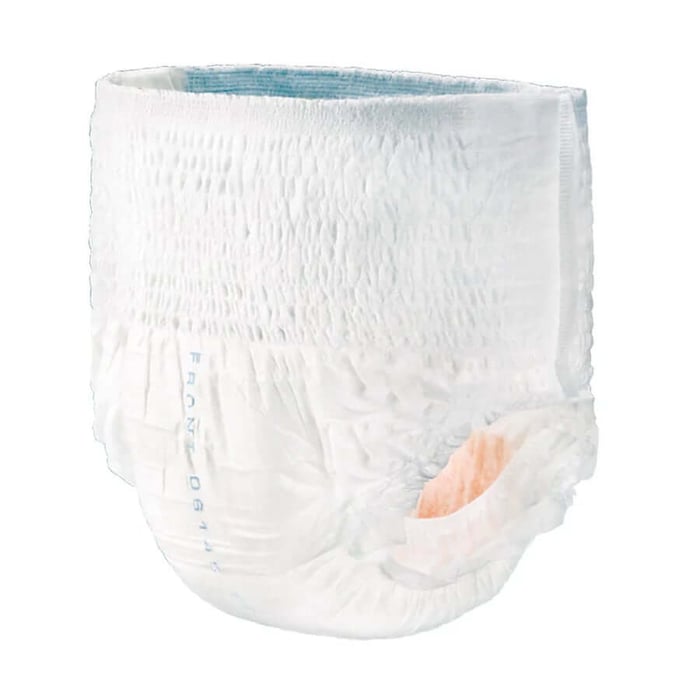Incontinence is far more common than most people realize. According to the National Association for Continence (NAFC) statistics, over 33 million Americans experience some sort of urinary incontinence or bladder condition. Among older adults, particularly women, the number is even higher. The NAFC’s We Count campaign states that 1 in 2 women will experience incontinence at some point in their lives.
Sadly, despite how widespread it is, incontinence is still heavily stigmatized. Many people feel embarrassed, isolated, or ashamed, choosing silence over support. This stigma has potentially serious consequences. Studies show that people with incontinence are more likely to report lower self-esteem, higher levels of depression, and even social withdrawal, all of which significantly reduce their quality of life. But it doesn’t have to be this way.
Incontinence is a medical condition, not a personal failure. And with the right strategies, treatment options, and mindset, people can take control, reduce symptoms, and continue to live full, active lives. Let’s break down the stigma and look at the real solutions that help preserve independence and dignity.
Understanding Incontinence: It's Not All the Same
First, it’s important to know that incontinence isn’t a one-size-fits-all condition. There are different types of incontinence, and it’s important to identify the correct type as treatment may differ based on the underlying cause—whether it's weakened pelvic muscles, nerve damage, prostate issues, or other health conditions.:
- Stress incontinence: Leakage during activities like coughing, sneezing, or exercising.
- Urge incontinence: Sudden, intense urge to urinate followed by involuntary leakage.
- Overflow incontinence: Inability to fully empty the bladder, leading to dribbling.
- Functional incontinence: Physical or mental limitations prevent someone from reaching the toilet in time.
Lifestyle and Behavioral Adjustments
Sometimes small lifestyle changes make a big difference, and they’re often the first line of defense. In some cases, minor lifestyle changes may be all that’s required.
Bladder Training
Bladder training involves gradually increasing the time between bathroom visits to retrain your bladder to hold urine longer. It can be especially effective for urge incontinence.
Timed Voiding
Instead of waiting for the urge, you go to the bathroom on a schedule—every 2–4 hours, for example. This reduces the chances of sudden leakage.
Fluid and Diet Management
Avoiding bladder irritants such as:
- Caffeine
- Alcohol
- Spicy foods
- Artificial sweeteners
Staying hydrated is important, but spreading fluid intake throughout the day and limiting it before bedtime can reduce nighttime accidents.
Weight Loss
Excess weight can add a lot of pressure on the bladder and also weaken pelvic floor muscles, leading to involuntary leaks. Losing even 5–10% of body weight has been shown to significantly reduce episodes of stress incontinence.
Pelvic Floor Exercises
Also known as Kegel exercises, they strengthen the muscles that support the bladder and urethra. Done consistently, they can dramatically reduce symptoms, especially in women with stress incontinence.
Many people do Kegels incorrectly, so it helps to:
- Work with a pelvic floor physical therapist
- Use biofeedback devices or apps for guidance
- Set a daily routine (like doing them during TV commercials or at red lights)
Pelvic floor therapy is also beneficial for men, especially after prostate surgery.
Medical Treatments
When lifestyle changes alone aren’t enough, medical interventions can offer relief.
Medications
For urge incontinence and overactive bladder, medications like anticholinergics or beta-3 agonists can reduce bladder spasms and increase bladder capacity.
Medical Devices
- Pessaries (for women): A device inserted into the vagina to support the bladder and reduce leaks.
- Urethral inserts: Used occasionally for physical activity that might trigger leaks.
Neuromodulation Therapy
This involves stimulating the nerves that control the bladder using:
- Percutaneous tibial nerve stimulation (PTNS): Done in a doctor’s office
- Sacral nerve stimulation (SNS): Requires implantation of a small device
These treatments help manage nerve signals and are often used for people with severe urge incontinence.
Surgery
Surgical options should be considered only when other treatments have failed and symptoms severely impact daily life.
For Women:
- Sling procedures: A small mesh strip supports the urethra to prevent leaks.
- Bladder neck suspension: Lifts and secures the bladder.
For Men:
- Artificial urinary sphincter: A device implanted to control urine flow.
- Male sling: Similar to the sling used in women.
These surgeries are typically outpatient and have high success rates but require proper evaluation and recovery time.
Incontinence Products and Support Tools
A key part of preserving quality of life is having the right tools to stay active and confident.
Absorbent Products
Modern incontinence pads, underwear, and briefs are discreet, comfortable, and highly effective. They come in a variety of sizes and absorbency levels to suit individual needs.
Waterproof Bedding and Seat Covers
These reduce stress about accidents at night or in public, giving people peace of mind.
Portable Toilets and Bedside Commodes
For those with mobility challenges, having access to a bathroom alternative nearby can make a big difference.
Disposal Bags, Wipes, and Skin Barriers
These help maintain hygiene, protect the skin, and reduce odor or irritation.
Emotional Support and Openness
The stigma surrounding incontinence often does more damage than the condition itself. The shame and silence can isolate people and delay treatment.
Here’s how to fight back:
- Talk to your doctor: Incontinence is not a minor issue. As daunting as it may feel, bring it up and ask for a referral if needed.
- Join a support group: Talking to others who understand the challenge can be incredibly validating.
- Educate loved ones: Reducing stigma starts with honest conversations.
- Practice self-compassion: Incontinence is a medical condition. It says nothing about your worth or competence.
You’re Not Alone—and You’re Not Powerless
The most important thing to remember: Incontinence is manageable. With the right plan and support, you can continue to live with purpose, connection, and joy and free of any stigma. From young adults to seniors, millions of people navigate this condition daily, and many do so confidently, without sacrificing their social life, career or passions.
At LL Medico, we believe that, while incontinence may be part of your story, you don’t have to let it define your life. Speak to a member of our team to discuss the vast range of adult diapers available. We can help you choose the best product for your needs. Of course, we can also advise on personal and patient care products, as well as urology devices and catheters. Call today at (855) 422-4556 or email support@llmedico.com.
As the late actress and advocate Audrey Hepburn once said, “Nothing is impossible. The word itself says 'I’m possible’.” That mindset matters. With a little courage and support, you can take back control, starting now.







 855-422-4556
855-422-4556 Chat
Chat E-Mail
E-Mail Monday - Friday 9:00AM to 5:00PM EST
Monday - Friday 9:00AM to 5:00PM EST





 Shopping With LL Medico
Shopping With LL Medico
 855-422-4556
855-422-4556